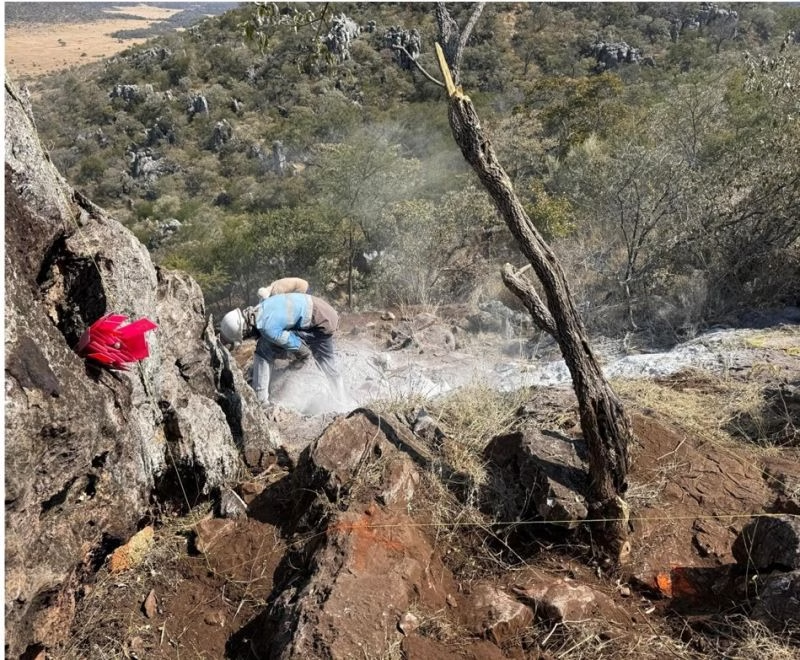Golden Deeps Limited (ASX: GED) has announced that it has completed an oversubscribed capital raising of A$3.54 million to accelerate exploration across its Otavi Mountain Land Critical Metals Projects in Namibia, including an extensive drilling programme at the high-grade Graceland prospect.
The company confirmed firm commitments for the placement of 44.28 million fully paid ordinary shares at A$0.08 per share.
Investors will receive one free attaching option exercisable at A$0.10, expiring in October 2029, subject to shareholder approval. The placement was managed by Perth-based GBA Capital Pty Ltd and was priced at a premium to the five-day volume-weighted average price of Golden Deeps shares on the ASX.
Golden Deeps CEO Jon Dugdale said the strong investor response reflected confidence in the company’s progress and the exceptional results emerging from its Otavi exploration programme.
“We are very pleased to have received such strong support from investors for this A$3.54 million placement,” Dugdale said. “The funding will allow the company to accelerate exploration of our Otavi projects and carry out extensive drilling to test the richly mineralised gossan targets at the high-grade Graceland prospect.”
The Graceland prospect, part of Golden Deeps’ newly acquired Central Otavi Critical Metals Project, lies within a 2.5-kilometre mineralised corridor containing multiple gossan and sulphide zones. Sampling results have been described as “spectacular”, revealing high-grade concentrations of copper, silver, zinc, lead, germanium, and antimony.
Rockchip assays returned up to 50.6% copper, 7,792 g/t silver, 38.3% zinc, 34.2% lead, and 224 g/t germanium across several mineralised zones known as Gossan 1 and Gossan 2.
Channel sampling across sulphide outcrops further confirmed exceptional intersections, including 3.5 metres at 12.6% copper, 79 g/t silver, and 18 g/t germanium, including 0.5 metres at 42.7% copper and 1,205 g/t antimony; 2.0 metres at 16.2% copper, 442 g/t silver, and 53 g/t germanium, including 1.0 metre at 26.8% copper and 842 g/t silver; and 3.0 metres at 11.2% copper, 294 g/t silver, 8.7% zinc, and 45 g/t germanium, including 0.5 metres at 26.2% copper and 1,118 g/t antimony.
A detailed induced polarisation (IP) and resistivity survey is now underway across the Graceland mineralised corridor to identify both shallow and deep “Tsumeb-type” sulphide targets down to 300 metres depth. Drilling contractors have been invited to tender for the upcoming drilling programme, which will follow completion of the IP survey.
The company’s current exploration drive is targeting areas with geological similarities to the world-class Tsumeb mine, which produced 27 million tonnes at 4.3% copper, 10% lead, 3.5% zinc, 95 g/t silver, and 50 g/t germanium during its lifetime.
The Tsumeb orebody is renowned for its unique suite of metals and complex sulphide mineralogy, a model that Golden Deeps is pursuing in its exploration across the Otavi belt.
Golden Deeps’ tenement portfolio spans over 440 square kilometres through its 80%-owned subsidiaries, Huab Energy (Pty) Ltd and Metalex Mining and Exploration (Pty) Ltd.
In addition to Graceland, the company controls several advanced polymetallic deposits, including the Nosib deposit, a vanadium-copper-lead-silver-gallium project with high-grade gallium and germanium intersections; the Khusib Springs deposit, which historically produced 300,000 tonnes at 10% copper and 584 g/t silver, with new drilling indicating mineralisation extending at depth; and the Abenab project, a high-grade vanadium-lead-zinc resource.
Exploration will also extend to five other “Tsumeb-type” targets within the Central Otavi properties, where soil and rockchip sampling programmes are planned to map further copper-silver-zinc-lead-germanium anomalies.
Golden Deeps’ discoveries come at a time when global demand for critical minerals—including copper, silver, germanium, gallium, and antimony—is accelerating due to their essential roles in renewable energy technologies and semiconductor manufacturing.
Recent export restrictions on germanium and gallium by China have intensified Western interest in alternative supply chains, positioning Namibia’s Otavi region as a potential strategic source.
“The results we have achieved at Graceland are truly outstanding,” Dugdale said. “We are now moving rapidly toward defining drill targets and advancing to the next stage of testing. This funding ensures we can maintain momentum and unlock the potential of what could be one of the most exciting polymetallic discoveries in southern Africa.”
The company said it will use proceeds from the placement to fund the IP survey, drilling, and development studies across its Otavi projects, as well as for working capital and exploration expansion.
If confirmed through drilling, Graceland could join Tsumeb, Kombat, and Khusib Springs in cementing the Otavi Mountain Land as one of Africa’s most diverse and historically rich metallogenic provinces—and a future hub for Namibia’s emerging critical metals industry.




